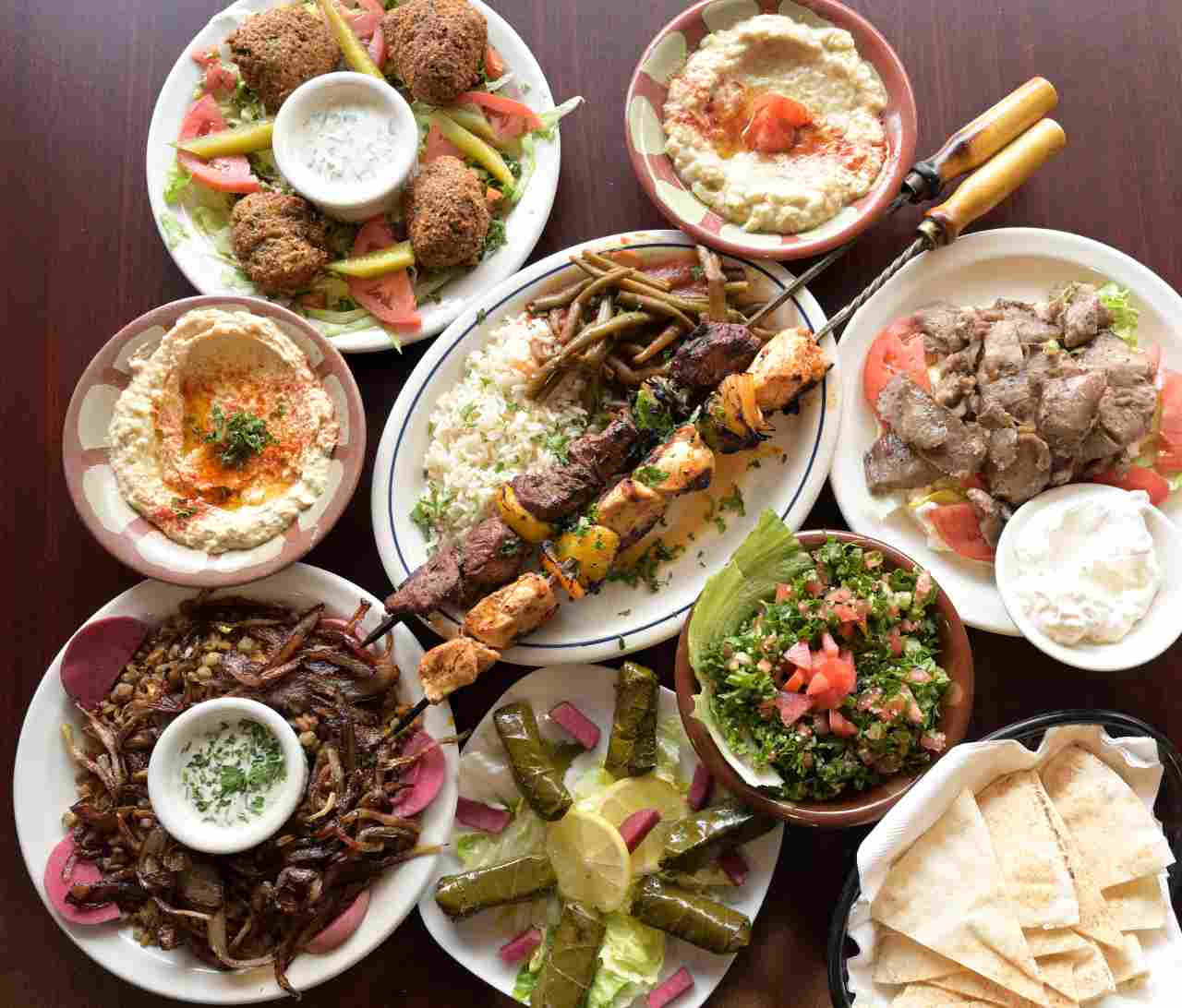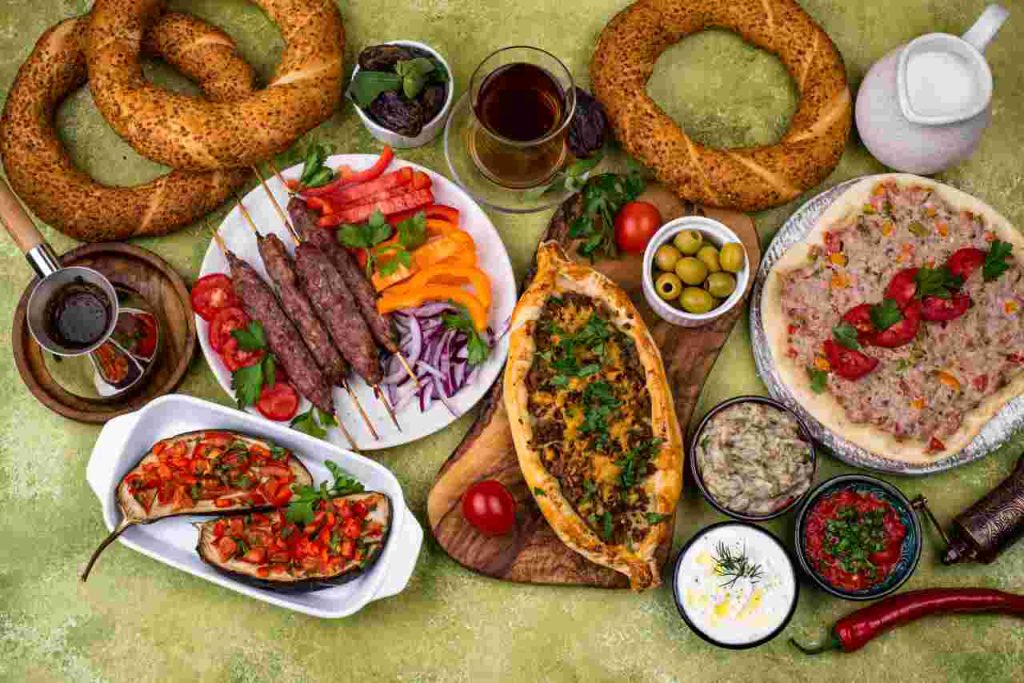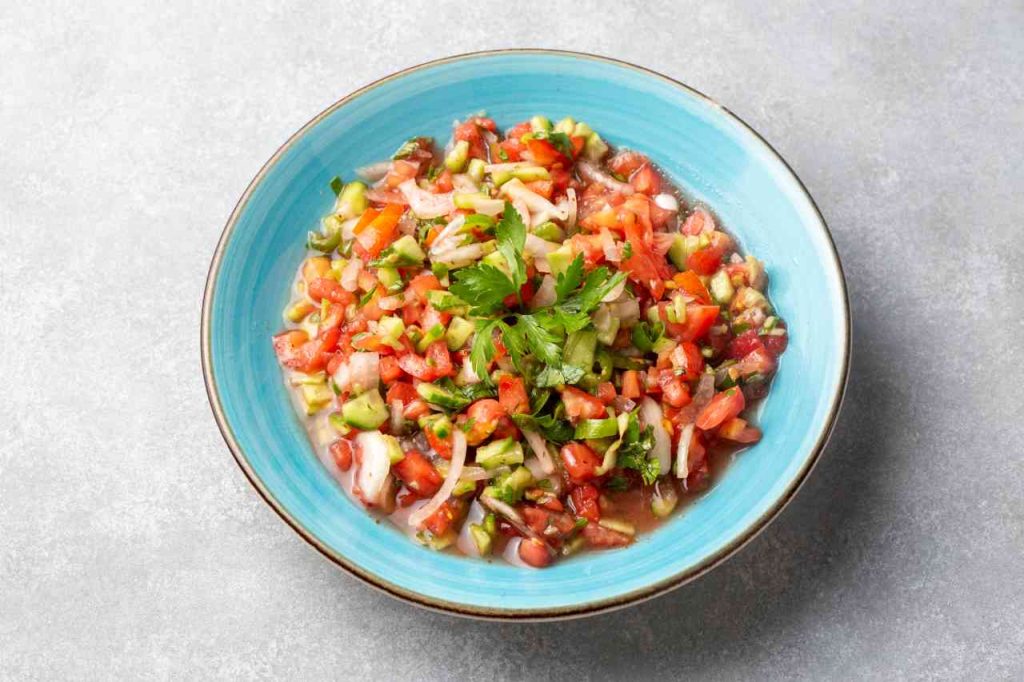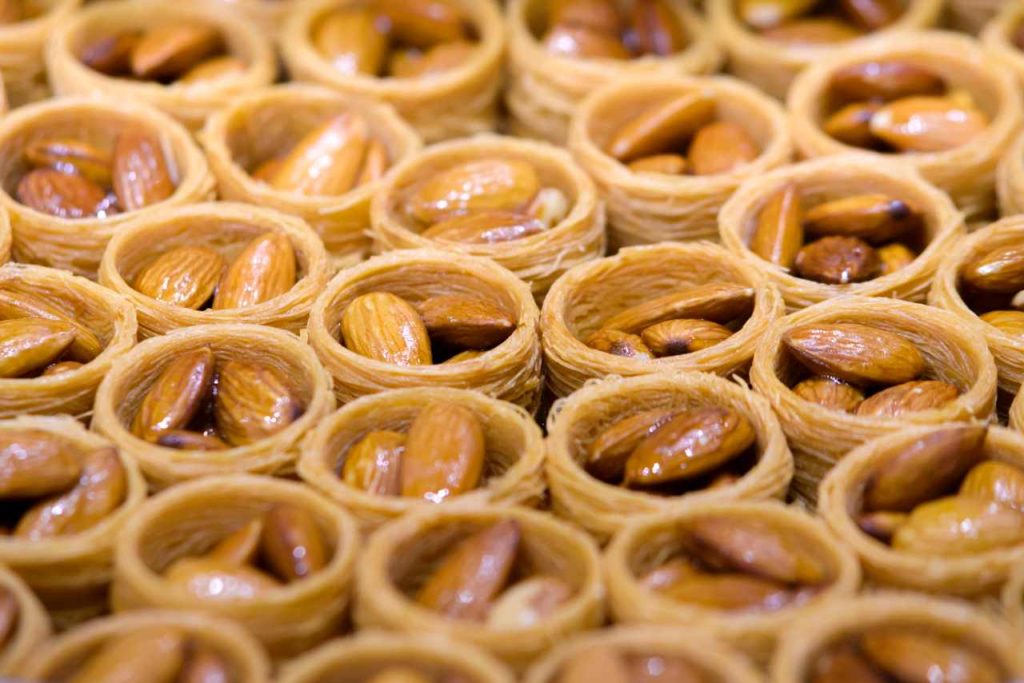
Turkish cuisine is one of the most refined and diverse cuisines in the world. Its flavors and traditions date back thousands of years and reflect the rich history and culture of Turkey. This magnificent journey through Turkish flavors and traditions will transport us to a magical world of aromatic spices, succulent meats, fresh vegetables, and exquisite desserts.
Cultural Influences on Turkish Cuisine
Turkish cuisine is a fascinating fusion of different cultures and culinary traditions. Its development has been influenced by various geographical and historical regions, which have contributed to the formation of distinctive flavors and cooking techniques.
Arab Influences
Arab influences in Turkish cuisine can be observed in many aspects. For example, traditional dishes such as hummus, baba ghanoush, and falafel have their roots in Arab culinary culture. This influence is particularly evident in the use of ingredients like chickpeas, tahini (sesame paste), and olive oil in Turkish dishes. The preparation of meat, such as the popular kebab, is also closely associated with grilling and roasting techniques typical of Arab cuisine.
Persian Influences
Persian influences have played a significant role in shaping Turkish cuisine. Persia introduced ingredients such as rice, nuts, dried fruits, and saffron to the Turkish culinary repertoire. Saffron, one of the most expensive spices in the world, is widely used in Turkish cuisine, imparting a unique color and aroma to dishes. Additionally, the technique of preparing rice in Turkish cuisine, known as pilaf, has its roots in Persian culinary culture.
Greek Influences
Turkish cuisine also draws from Greek culinary traditions. The longstanding neighborly relations and cultural exchange between Greece and Turkey have mutually influenced the cuisines of both nations. An example of Greek influence is the popular dish of eggplant and meat known as moussaka. Creamy yogurt-based sauces, feta cheese, olives, and olive oil are also commonly found ingredients in Turkish dishes that have their origins in Greek cuisine.
Armenian Influences
Armenian influences are also visible in Turkish cuisine, especially in traditional meat-based delicacies. Kofta, a popular meat dish in Turkey, has Armenian roots. It consists of spicy ground meat formed into balls and then baked or grilled. Additionally, traditional meat dishes such as dolma (stuffed vegetables) and sarma (stuffed grape leaves) also have their origins in Armenian culinary culture.

The combination of these diverse cultural influences makes Turkish cuisine unique and incredibly fascinating. Over the centuries, Turkey has become a melting pot of flavors from different regions, creating an extraordinary palette of tastes, aromas, and textures. Turkish cuisine is a true journey through time and cultures, enchanting the taste buds and opening our eyes to the culinary richness of this region.
Aromatic Spices and Herbs
Turkish cuisine is renowned for its use of a wide range of aromatic spices and herbs that give dishes a unique flavor and aroma. Commonly used spices include cinnamon, cumin, nutmeg, ginger, paprika, ground coriander, and dried mint. These intense flavors beautifully complement traditional Turkish dishes such as kebabs, dolma, or baklava.
Intrested about Turkey? See more about: Pamukkale – White Terraces and Ancient History of Turkey
Meat as the Main Ingredient
Meat plays a crucial role in Turkish cuisine. Various meat dishes such as kebabs, adana, or döner are popular. Pork, beef, lamb, and poultry are widely used and prepared in many different ways. One of the most famous meat dishes is Turkish kebab, consisting of spicy meat chunks grilled on skewers and served with hummus and fresh bread.
Abundance of Vegetables and Salads
Turkish cuisine is also rich in fresh vegetables and salads. Eggplants, peppers, tomatoes, cucumbers, onions, lettuce, and many other vegetables are widely utilized in Turkish dishes. One popular dish is imam bayildi, which is stewed eggplants stuffed with juicy vegetables. Turkish salad, known as shepherd’s salad, is a combination of tomatoes, cucumbers, peppers, onions, and olives gently tossed with olive oil and lemon juice.

Sensual Turkish Desserts
Turkish cuisine is also famous for its exquisite desserts that awaken our senses and provide unforgettable taste experiences. Turkish desserts are renowned worldwide for their unique flavor combinations, elegance, and stunning appearance. Here are a few examples of these exceptional Turkish sweets:
- Baklava. Baklava is undoubtedly one of the most famous Turkish dishes. It consists of many thin layers of flaky phyllo dough delicately layered with chopped nuts (usually walnuts or almonds) and drizzled with aromatic sweet syrup, typically based on honey, sugar, and lemon juice. The result is heavenly—crispy, lightly moist, and saturated with a nutty flavor.

- Turkish Delight. Turkish delight, also known as Turkish rahat lokum or simply lokum, is a soft, chewy candy that has a long-standing tradition in Turkish cuisine. It is made from sugar, water, cornstarch, fruit or floral flavors, and can be enriched with nuts or dried fruits. Turkish delight comes in various flavors and colors, and its texture is smooth and slightly sticky. It is often enjoyed with a cup of tea and makes for an exquisite treat.

- Sutlac. Sutlac is a traditional Turkish rice pudding that is often served as a dessert. It is prepared by cooking rice with milk, sugar, vanilla, and cinnamon until it reaches a thick, creamy consistency. It is often baked in the oven, giving it a golden top and a subtly caramelized flavor. Sutlac is beloved by both children and adults for its sweet, creamy nature and pleasant aroma.
Turkish desserts are known not only for their exceptional taste but also for their beautiful presentation. They are often adorned with nuts, rose petals, powdered sugar, or silver beads, adding elegance and visual appeal. When indulging in Turkish desserts, one can experience a true feast for the taste buds, where sweetness, aroma, and texture come together in perfect harmony.
One cannot explore Turkish cuisine without trying these exceptional desserts. Their richness of flavors and extraordinary aesthetic qualities make them an integral part of Turkish culinary tradition, and anyone fortunate enough to taste them will undoubtedly experience unforgettable moments of culinary delight.
Turkish Cuisine – You Must Try It!
Journeying through the flavors and traditions of Turkish cuisine is an unforgettable experience. Aromatic spices, succulent meats, fresh vegetables, and exquisite desserts create a unique tapestry of this cuisine. Turkish cuisine is a testament to the rich history and culture of the country. Its flavors capture the hearts and palates of travelers from around the world.



